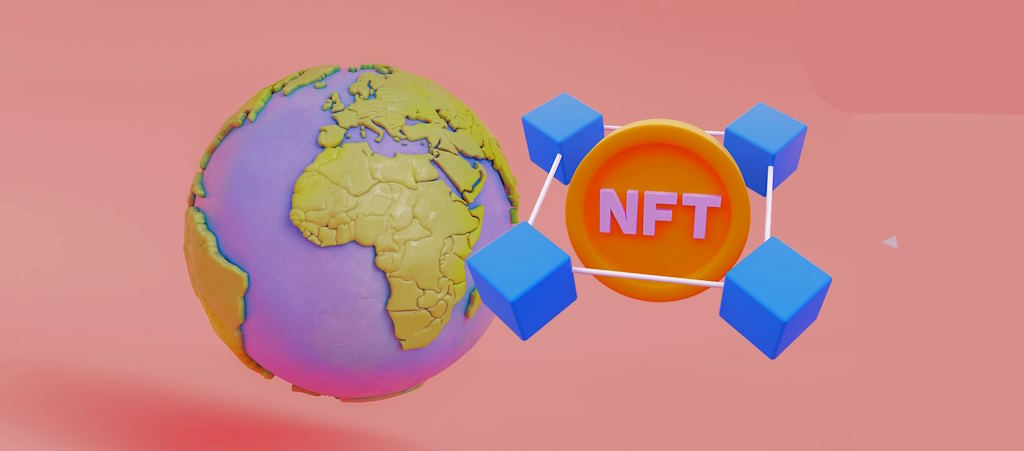NFTs and Sustainability: Carbon Footprint and Green Initiatives
The world of Non-Fungible Tokens (NFTs) has captured widespread attention, revolutionizing the way we perceive and trade digital assets. As NFTs gain momentum across various industries, concerns about their environmental impact have emerged.
Factors contributing to NFTs’ carbon emissions
Energy-intensive mining and verification process:
One of the key factors contributing to the carbon emissions associated with NFTs is the energy-intensive mining and verification process. NFTs are typically built on blockchain networks, such as Ethereum, which rely on complex algorithms to validate and secure transactions. This process, known as mining, requires powerful computers to solve mathematical puzzles, consuming significant amounts of energy. The energy consumption stems from the need for high computational power and the immense competition among miners to be the first to solve the puzzle and add a new block to the blockchain. Unfortunately, this energy consumption often relies on fossil fuels, contributing to carbon emissions and environmental harm.

Green initiatives and solutions in the NFT space
Transitioning to more sustainable blockchain networks:
Recognizing the environmental concerns associated with NFTs, the industry is actively exploring the transition to more sustainable blockchain networks. Ethereum, for instance, is undergoing a significant upgrade to Ethereum 2.0, which will introduce a Proof-of-Stake (PoS) consensus mechanism. PoS requires considerably less energy compared to the current Proof-of-Work (PoW) system, making it a more eco-friendly option. By transitioning to sustainable blockchain networks, NFT platforms can significantly reduce their carbon footprint and promote a greener ecosystem.
Introduction of Proof-of-Stake and other eco-friendly consensus mechanisms:
Apart from transitioning to PoS, NFT platforms and blockchain networks are exploring other eco-friendly consensus mechanisms. These mechanisms aim to reduce energy consumption and carbon emissions while maintaining the security and efficiency of the network. For example, some networks are experimenting with delegated proof-of-stake (DPoS) or practical Byzantine fault tolerance (PBFT) consensus algorithms. By embracing these eco-friendly alternatives, NFT platforms can contribute to a more sustainable NFT landscape.
Offset programs and carbon neutrality initiatives by NFT platforms:
To address the carbon emissions generated by NFTs, platforms are implementing offset programs and carbon neutrality initiatives. These programs involve investing in projects that reduce greenhouse gas emissions or capture carbon from the atmosphere. NFT platforms can allocate a portion of their revenue or collaborate with environmental organizations to support such initiatives. By actively offsetting their carbon footprint, NFT platforms demonstrate their commitment to sustainability and encourage a more environmentally conscious approach within the industry.

Collaboration between NFT platforms and environmental organizations
Partnerships promoting sustainability and conservation efforts:
NFT platforms are increasingly forging partnerships with environmental organizations to promote sustainability and conservation efforts. By joining forces, these collaborations leverage the power of NFTs to raise awareness about environmental issues and support conservation initiatives. Together, NFT platforms and environmental organizations can create campaigns, host events, and develop educational materials to highlight the importance of protecting the planet and preserving biodiversity. These partnerships foster a sense of shared responsibility and empower individuals to take action towards a greener future.
Raising awareness and funding for environmental causes through NFTs:
NFTs provide a unique platform for raising awareness and funding for environmental causes. NFT platforms collaborate with environmental organizations to mint and auction digital artworks, collectibles, or experiences that are specifically designed to support conservation efforts. The sale of these NFTs generates proceeds that can be directed towards funding various projects, such as reforestation, wildlife conservation, or clean energy initiatives. Additionally, the ownership and transferability of NFTs enable ongoing support as they can be resold or traded, creating a sustainable fundraising ecosystem for environmental organizations.
Examples of successful collaborations and their impact:
Several successful collaborations between NFT platforms and environmental organizations have made a significant impact. For instance, partnerships have emerged between NFT marketplaces and marine conservation organizations, where NFT sales contribute to protecting and restoring coral reefs or conserving marine ecosystems. In another example, artists have created NFTs in support of climate change initiatives, with proceeds going towards research, advocacy, and sustainable development projects. These collaborations not only raise funds but also amplify the message of environmental organizations, reaching broader audiences and inspiring collective action.


